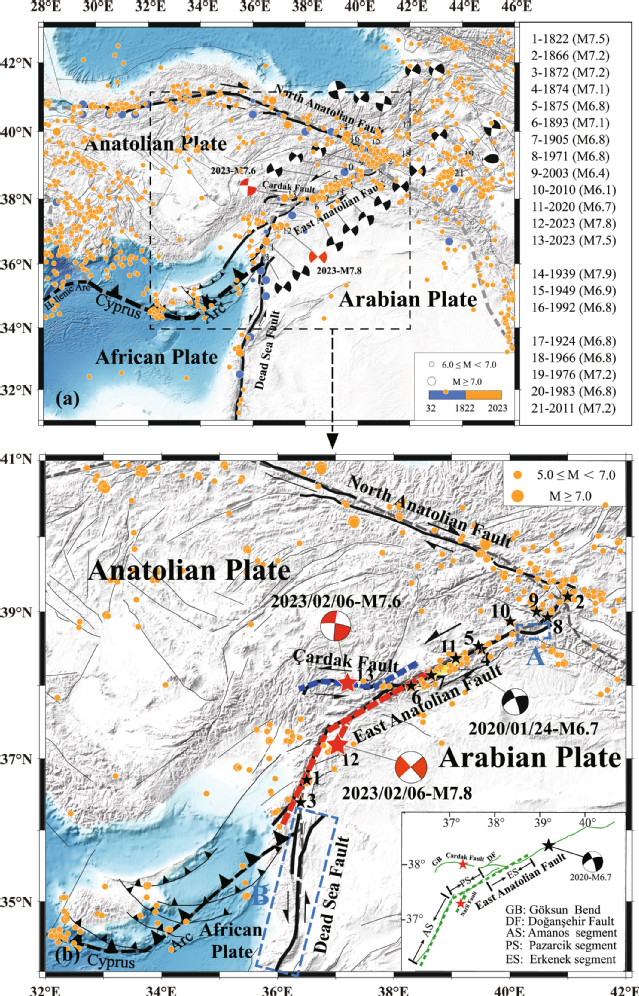Jianquan Chen1, Chang Liu1,*, Luca Dal Zilio2,3, Jianling Cao4, Hui Wang4, Guangliang Yang5, Oğuz H. Göğüş6, Hang Zhang1, and Yaolin Shi7
1State Key Laboratory of Marine Geology, Tongji University, Shanghai, China
2Earth Observatory of Singapore, Nanyang Technological University, Nanyang Ave, Singapore
3Asian School of the Environment, Nanyang Technological University, Nanyang Ave, Singapore
4Institute of Earthquake Forecasting, China Earthquake Administration, Beijing, China
5Institute of Seismology, China Earthquake Administration, Wuhan, China
6Istanbul Teknik Üniversitesi, Avrasya Yer Bilimleri Enstitüsü, Ayazaga, Istanbul, Türkiye
7Key Laboratory of Computational Geodynamics, Chinese Academy of Sciences, Beijing, China
*Corresponding author.
E-mail address: changliuu@tongji.edu.cn; changliuu@gmail.com (C. Liu)
Abstract:Earthquake interaction across multiple time scales can reveal complex stress evolution and rupture patterns. Here, we investigate the role of static stress change in the 2023 Mw 7.8 and 7.6 earthquake doublet along the East Anatolian Fault (EAF), using simulations of 19 historical earthquakes (M ≥ 6.1) and the 2023 earthquake doublet from 1822 to 2023. Focusing on six cascading sub‐events during the 2023 Kahramanmaraş earthquake doublet, we reveal how one sub‐event's stress alteration can impact the emergence and rupture of subsequent sub‐events. Our analysis unveils that the 2023 Mw 7.8 earthquake was delayed due to stress shadow effects from historical events, while the 2023 Mw 7.6 earthquake was accelerated as a result of stress increases from historical events and ultimately triggered by the 2023 Mw 7.8 earthquake. This study underscores the importance of grasping earthquake preparation, rupture initiation, propagation, and termination in the context of intricate fault systems worldwide. Based on these results, we draw attention to increased seismic hazards in the Elazig‐Bingol seismic gap of the EAF and the northern section of the Dead Sea Fault (DSF), necessitating increased monitoring and preparedness efforts.

Fig. Geological settings of the Eastern Mediterranean area and the spatiotemporal distribution of large historical earthquakes (M ≥ 5.0) from 32 to 2023.


